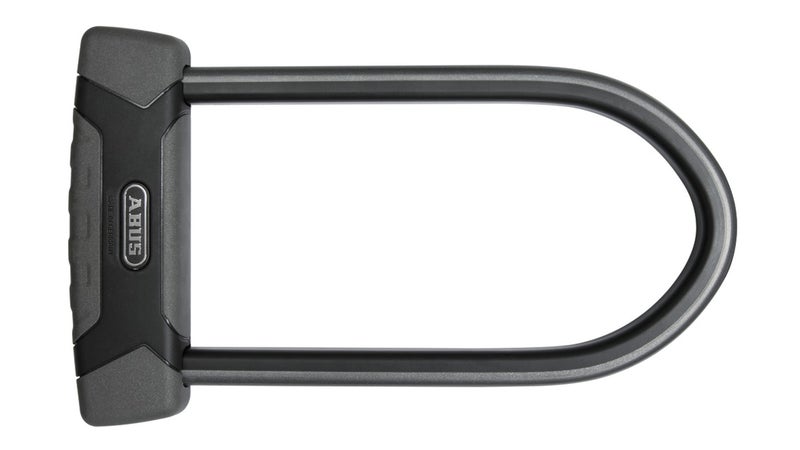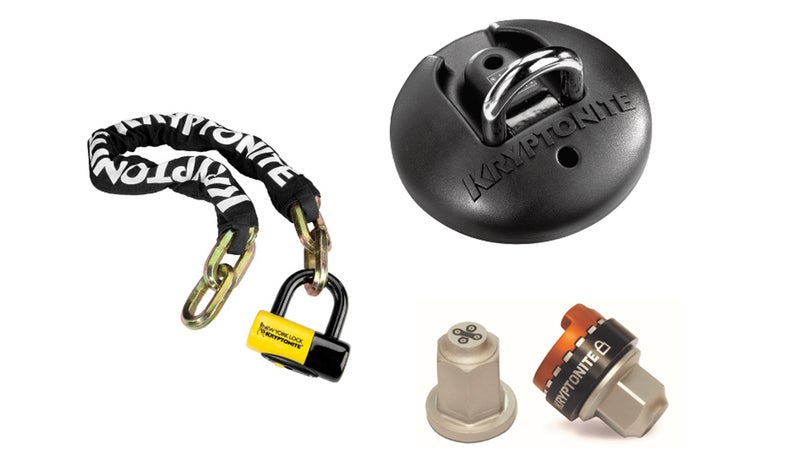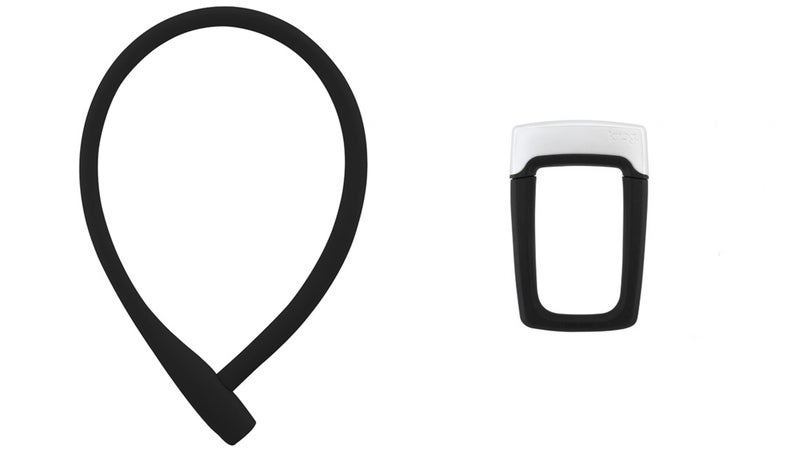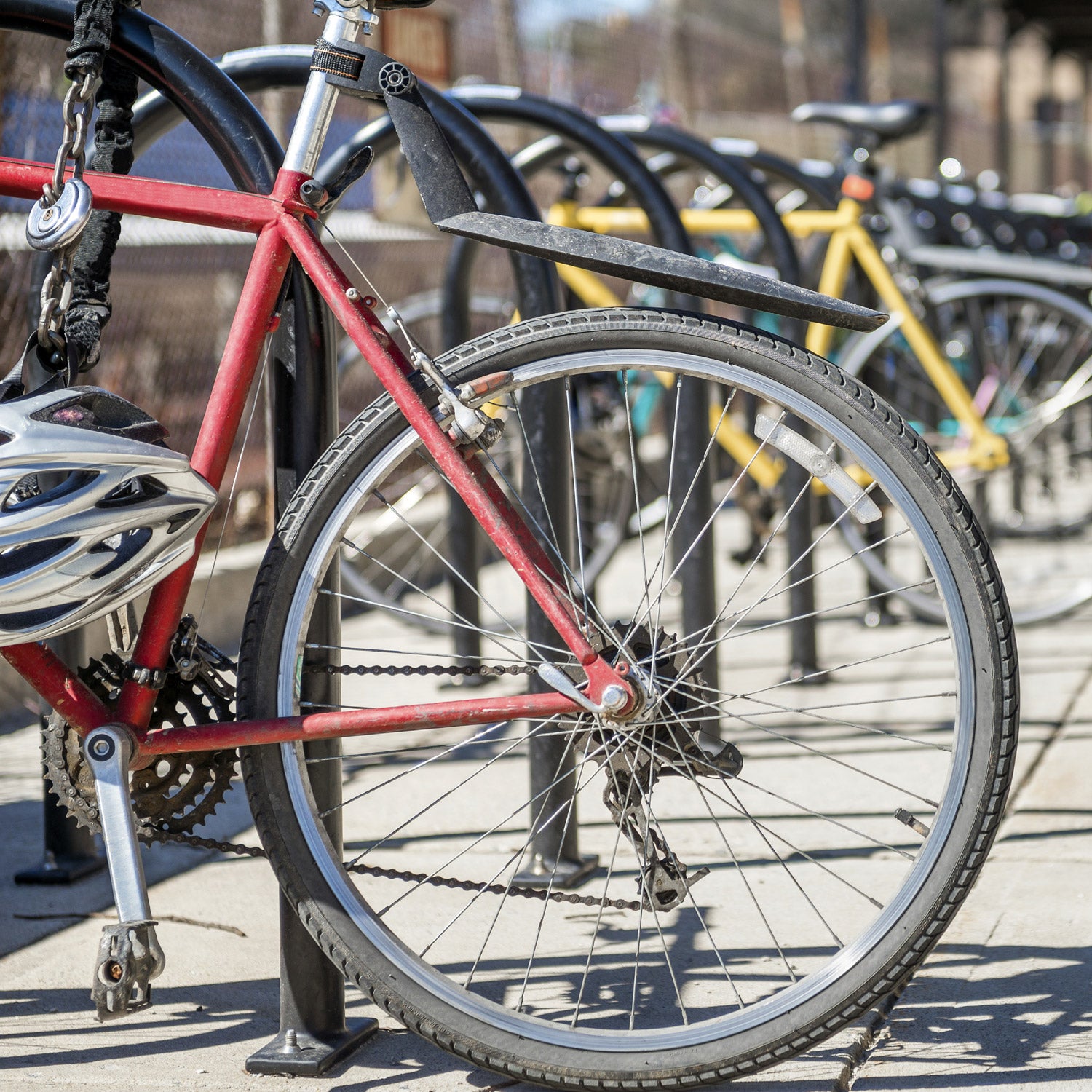A recent spate of has us thinking about bicycle security.
The good news: Over the past decade, the number of bikes reported stolen in the United States╠řhas decreased every year except two (2011 and 2012), according to FBI statistics. Granted,╠řthose statistics╠řunderstate the problem because many thefts go unreported, says Daryl Slater, PR manager with╠řlock maker╠ř. But the numbers are still trending in the right direction.
The bad news: Over the same time period, the average value of bicycles reported stolen has increased by 56 percent. That jump likely╠řreflects the ever-surging price╠řtag on╠řbikes: The╠řaverage retail price of rigs╠řsold in specialty bike shops increased╠řfrom $410 in 2005 (or $499 to adjust for inflation)╠řto $714 in 2014.╠řAnd many high-performance bicycles sell╠řfor four and five figures these days.
Given thereÔÇÖs so much money╠řat stake, we reached out to╠řseveral╠řindustry vets╠řto learn╠řwhat cyclists can╠řdo to protect their investments. ÔÇťWhen a thief sees a piece of security thatÔÇÖs locking a bike, they need to know that it will be too great an investment of time or energy to steal it,ÔÇŁ says Nick Watkin, general manager at Kryptonite. ÔÇťIf you slow them down or impede them enough, thieves will simply move on to an easier target.ÔÇŁ
Manufacturers seem to draw a distinction between two types of thieves: Opportunists who prowl in search of easy quarry, like unlocked or lightly protected bikes left outside shops while the owner runs inside for a minute,╠řand professional thieves who╠řcome armed with an arsenal of tools that, if given enough time, can defeat any lock. ÔÇťWe suggest that people consider their situation and ensure the locking method is adequate,ÔÇŁ says Sam Moore, head of marketing at . ╠ř
According to Joan Hanscom, marketing manager at ABUS Mobile, cyclists are sometimes tempted to skimp on a nice lock after spending so much on the╠řbike. But╠řmaking sure the expense of the lock matches the expense of the bike is one of the best ways to prevent theft. ÔÇťNo lock is impervious,ÔÇŁ she says, ÔÇťbut using the strongest, best lock available buys you more time against thievesÔÇöand that matters a lot.ÔÇŁ
How to Keep Your Bike From Getting Stolen
- Be wary of cable locks, which are easily chopped with wire cutters. They might be enough to deter passing theft and opportunists, but they are ineffective against seasoned thieves.╠ř
- Always bring your bike inside at night. It may be a hassle to lug it up a flight of stairs, but many bikes are stolen at night because there are fewer eyes and ears around to deter thieves.
- Two or three locks (even cables) are better than one. The more difficult you can make it look to steal your bike, the less a thief will want to hassle with it.
- Never lock your bike to a tree. Not only can it damage the tree, but any tree thatÔÇÖs small enough to fit a U-lock is small enough for thieves to cut through quickly. ÔÇťWeÔÇÖve seen it happen many times,ÔÇŁ says Hanscom.
- Park your bike with other bikes when you lock it up. If you have a good-quality lock and other cyclists have poorer security, their bikes will be targeted first.
- DonÔÇÖt forget to lock your wheels and your saddle. Quick releases and hex bolts make it easy for thieves to snatch these components. ÔÇťCable locks have their place as an accessory to a U-lock for locking wheels,ÔÇŁ says Hanscom.
- Lock up your bikes even inside your garage, and be sure they are locked to some fixed point like a pipe or rafter. ÔÇťPeople think that once itÔÇÖs in your garage itÔÇÖs safe,ÔÇŁ says Watkin. ÔÇťBut thatÔÇÖs music to thieves ears, because gaining access to a garage can be easy, and then all the toys are there for the taking.ÔÇŁ
- Keep a file on all of your bikes that includes receipts, serial numbers, and photos. And register each bike in a nationwide database like the ╠řso it can be returned to you if itÔÇÖs ever stolen and recovered.
- Consider investing in a GPS tracking device, such as the , the , or the forthcoming .
- On Strava and other social fitness platforms, mask your exact location to public users. Savvy thieves have been known to target homes by tracking athletes who upload frequently.
For additional tips and tricks, check out KryptoniteÔÇÖs .
Your Lock Options

U-Locks
On the street, a U-lock is often your best option. U-locks tend to be smaller, lighter, and more compact than chains, which makes them easier to carry. The ╠ř(pictured above)╠řis the companyÔÇÖs top-rated bike model, with a temper-hardened steel shackle and locking elements, a parabolic-shaped shackle thatÔÇÖs said to counter prying and pulling, and double bolts on the shackle for enhanced security. Watkin says that in particularly dangerous areas or for very expensive bikes, some clients have been upgrading to the motorcycle-rated , which weighs twice as much as the 540╠řbut affords even greater security.╠ř
Unless you plan to carry a secondary lock, youÔÇÖll need a good way to secure your wheels, because╠řa U-lock can often cover only the frame. ╠ř(pictured below)╠řinstall on your bike and keep the wheels permanently safe.
╠ř╠ř

Chain Locks
At home in the garage, a chain lock such as the ╠ř(pictured above)╠řis probably the best option because the extra length provides more latitude on where and how you can lock up the bike. ItÔÇÖs built of 14-millimeter╠řsix-sided chain links made of hardened manganese steel, includes a New York Disc Lock for closure, and comes in both 100 millimeter╠řand 150 millimeter╠řlengths.╠ř
Bikes in the garage should be locked to a fixed point, otherwise thieves can carry off the locked bikes and deal with the lock later. Kryptonite also offers the ╠ř(pictured above), which bolts into concrete with 5/8-inch╠řcement anchor bolts. The design also works in metal so it can be installed in the bed of a pickup truck for mobile security.
╠ř

Rack Locks
Bikes do get stolen from racks on vehicles, despite built-in locks. Generally, these rack locks provide ample protection if youÔÇÖre driving to the trailhead, stopping on the highway for gas, running into a cafe╠řfor a quick coffee, or any other situation where youÔÇÖll be away only for a short time. But you should never leave your bike on a car╠řrack unattended for long periods of time or overnightÔÇöeven if the rack is locked.╠ř
ÔÇťLocking a bike on a rack is a deterrent that adds more time and effort to a possible theft,ÔÇŁ says Chris Ritchie from Thule. According to Ritchie, roof-mount racks are typically safer than rear-mount options because they are both harder to access and more visible, which deters thieves. He also says that fork-mount carriers, like the ╠řor , are the safest of all because thieves risk damaging the bikes when they remove them.
╠ř╠ř
ÔÇťAdding locking cables would create another step for would-be thieves to go through when attempting to steal your bike, which would create more time and effort,ÔÇŁ Ritchie adds. For roof racks, we like the ╠řbecause the fit is╠řtight, making clipping it more difficult, and the protective rubber sheath wonÔÇÖt scratch or dent your carÔÇÖs roof. On rear racks, supplement the built-in cable lock with something sturdier, such as the ╠řor . The ╠řalso works well to run around two bikes on a hitch-mount rack.
╠ř╠ř╠ř


